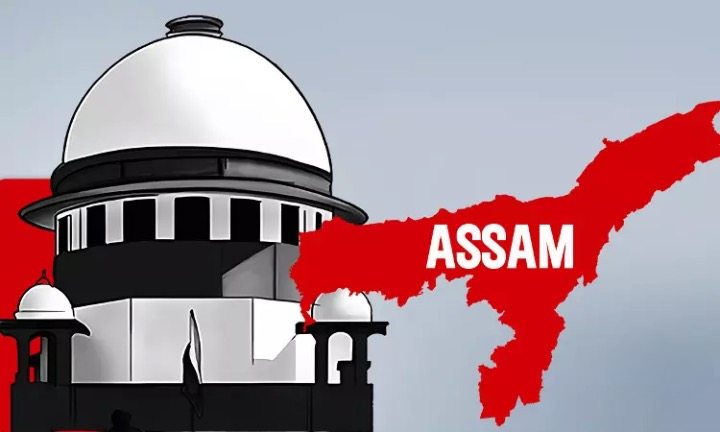The Supreme Court directed the governments to provide details on “the estimated inflow of illegal migrants into India.. after March 25, 1971”. (Indian Express)

- 08 Dec 2023
Why is it in the News?
The Supreme Court on Thursday asked the Centre and Assam government to provide details on the “estimated inflow of illegal migrants” to Assam and other Northeastern states after March 25, 1971, and the status of border fencing.
News Summary:
- During the hearing of petitions, a five-judge bench of the Supreme Court expressed concerns about the perceived 'unlimited influx' of illegal migrants from Bangladesh, impacting demographics and straining resources for Indian citizens.
- The court questioned the application of Section 6A, granting Indian citizenship benefits to illegal migrants, solely in Assam and not in West Bengal, which shares a larger border with Bangladesh.
- The Supreme Court directed the Home Secretary to submit an affidavit by May 11, 2023, detailing the estimated inflow of illegal migrants, steps taken to address illegal immigration, and specifics on border-fencing extent and timelines.
- The government was also instructed to provide information on illegal immigration along the West Bengal border post on March 25, 1971.
Why Section 6A of the Citizenship Act, 1955 is Under Challenge?
- Presently, a Supreme Court bench is reviewing petitions from indigenous Assamese groups challenging Section 6A of the Citizenship Act.
- These groups assert that the special provision serves as a 'beacon' for illegal entrants to settle in Assam, gain Indian citizenship, and subsequently deprive locals of political, and economic rights, jeopardizing Assamese cultural identity.
- The petitioners question the constitutional validity of Section 6A, claiming it is arbitrary, specifically singles out Assam, violates Article 14, and has led to an influx of illegal migrants from Bangladesh.
- They advocate for establishing 1951 as the cutoff date for inclusion in the National Register of Citizens instead of 1971.
- The primary petitioner, Assam Sanmilita Mahasangha (ASM), argues that Section 6A is discriminatory, arbitrary, illegal, and infringes upon the rights of indigenous Assamese people by establishing a different citizenship cutoff date for Assam compared to the rest of India (July 1948).
What are the Arguments of the Central Government?
- The central government refutes the accusation of unfairly burdening the state with the responsibility of handling illegal migrants, contending that different states of India can be classified differently based on historical and geographical factors.
- According to the government, the classification implied in Section 6-A is founded on intelligible differentia.
- Dismissing claims of arbitrariness, the Centre asserts that the guarantee against non-arbitrariness under Article 14 does not mandate universal application for every law, irrespective of dissimilarity or the nature of the individuals it pertains to.
